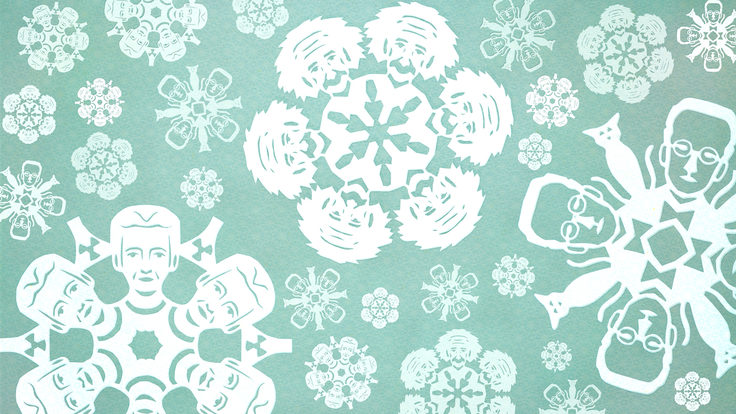Fermilab Today published this story on August 19, 2011. To get your fill of muons, also check out When Muons Collide and The Muon Guys in symmetry magazine.
A new experiment planned at Fermilab will allow researchers to peer into the sub-atomic world of virtual particles and resolve a decade old mystery. The Fermilab muon g-2 experiment will use an intense beam of muons, short-lived particles that are similar to electrons but 200 times heavier.

Fermilab’s planned muon g-2 experiment will use the storage ring that was used in a previous muon g-2 experiment at Brookhaven National Laboratory.
"One of the most important things about this experiment is that it will help guide what's found in the LHC and the Tevatron data," said muon g-2 co-spokesperson Lee Roberts. "It will help us figure out how the results fit into the grand scheme."
The new muon g-2, pronounced g minus 2, experiment will become an integral part of Fermilab's Intensity Frontier, where scientists study intense beams of particles to extract fundamental properties with high precision or look for extremely rare processes. The experiment went through a DOE peer review last year and Fermilab expects CD-0, the first of five stages in the Department of Energy’s approval process, to be approved in early 2012.
The experiment aims to measure the gyromagnetic ratio “g” of the muon. This ratio is particularly sensitive to any new particles or interactions that might be lurking beyond the Standard Model, our current understanding of elementary particle physics.
An experiment that concluded in 2001 at Brookhaven National Laboratory found a tantalizing 3.5 sigma level discrepancy between the theoretical calculation and the experimental value.
“This discrepancy piqued the interest of the scientific community, but really demands confirmation from a higher-precision experiment,” said Chris Polly, the experiment’s project manager. "That’s what we’re building at Fermilab.”
The new muon g-2 experiment will bring the entire 650-ton storage ring used in the Brookhaven experiment to Fermilab, where the collaboration will take advantage of the existing accelerator complex. The reconfigured Antiproton Source will deliver the beam of muons.
Both muon g-2 co-spokespersons David Hertzog and Lee Roberts believe that improved technology and Fermilab's unique facilities would allow them to build a more sensitive muon g-2 experiment and improve on the measurements made at Brookhaven.
"Both of us spent a lot of time on the previous experiment and we feel passionately that the physics demands even further investigation," Hertzog said. “Fermilab is the only facility in the world that currently has the capability to make the custom beam of muons required for a next-generation experiment.”
The muon g-2 experiment gets its name from the fact that the gyromagnetic ratio “g” of the muon differs ever so slightly from the simple expectation of two. This anomaly is commonly called the anomalous magnetic moment of the muon.
Muons carry a fundamental property called spin, which makes them act somewhat like tiny tops constantly spinning about an axis. When these tiny tops are placed in a magnetic field, the axis that they are spinning about will start to revolve perpendicularly around the magnetic field. Scientists determine the gyromagnetic ratio by precisely measuring this rate of revolution.
Scientists have known the primary reasons for the deviation from two for many years. The deviation exists because there are “virtual” particles that continually pop in and out of existence around the muon. These particles disturb the muon’s interaction with the magnetic field, causing the g-2 anomaly. Scientists can calculate the size of the anomaly within the Standard Model framework by accounting for all the effects of known particles. A significant difference between experiment and theory is then indicative that something is missing in the Standard Model – a sign of new physics.
About 40 members of the g-2 collaboration met at Fermilab in March to begin developing an implementation plan. “The muon g-2 experiment provides a real opportunity for students and postdocs to get their hands dirty," said g-2 collaborator Brendan Casey. "We have already had collaborators ranging from IMSA high school students to postdocs helping out with developing new detector technology for the experiment."
Collaborators hope to break ground in early 2013 on a new experimental hall for the storage ring. They plan to begin taking data three years later. “The muon g-2 experiment will augment the physics program at the laboratory with an experiment that will be in the textbooks,” said Fermilab Director Pier Oddone. “This will help us interpret the physics that is yet hidden from us.”






